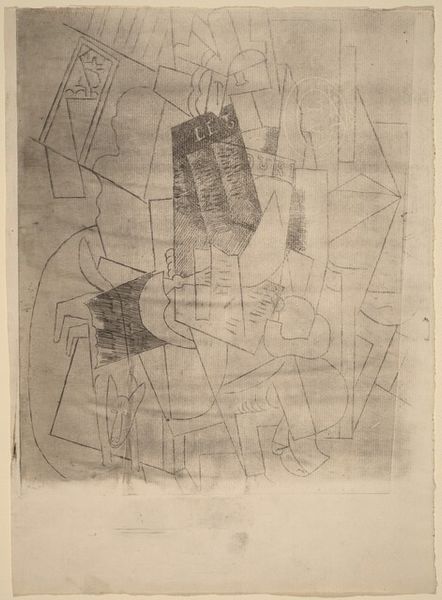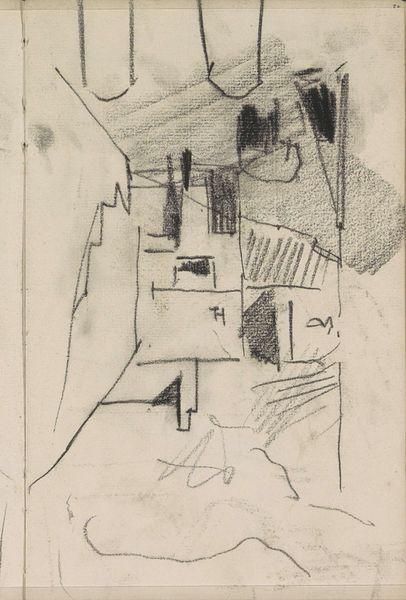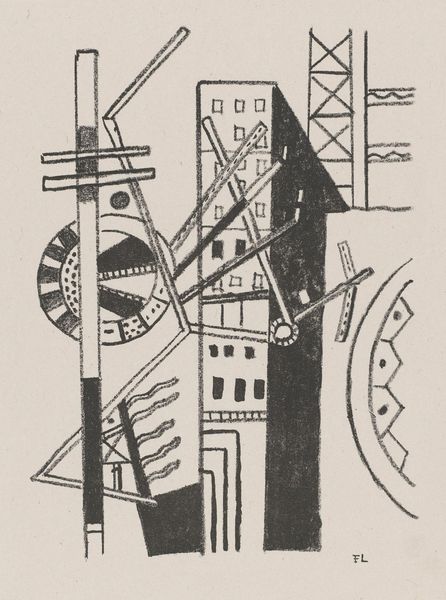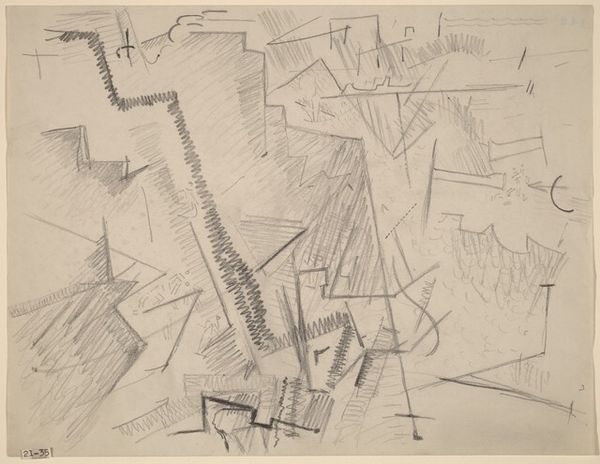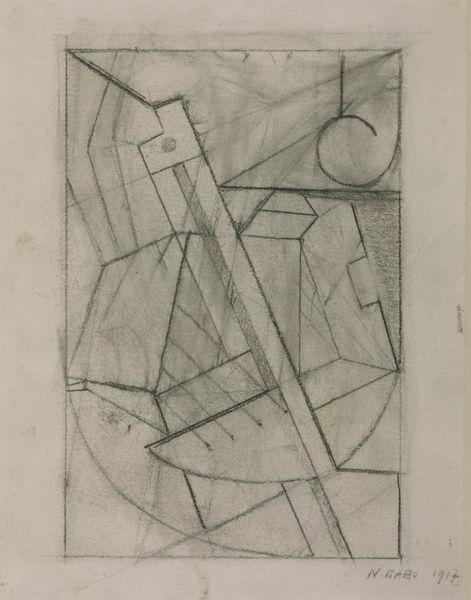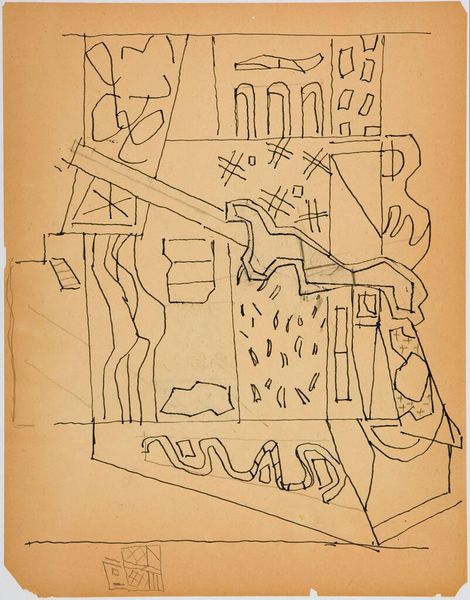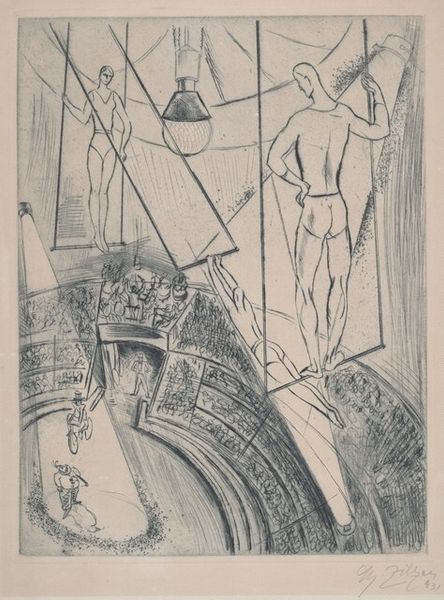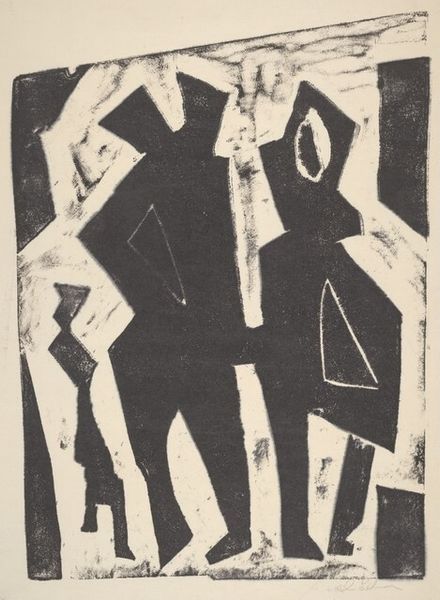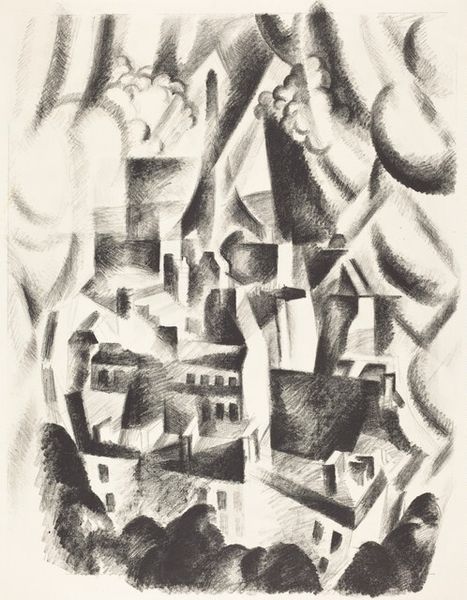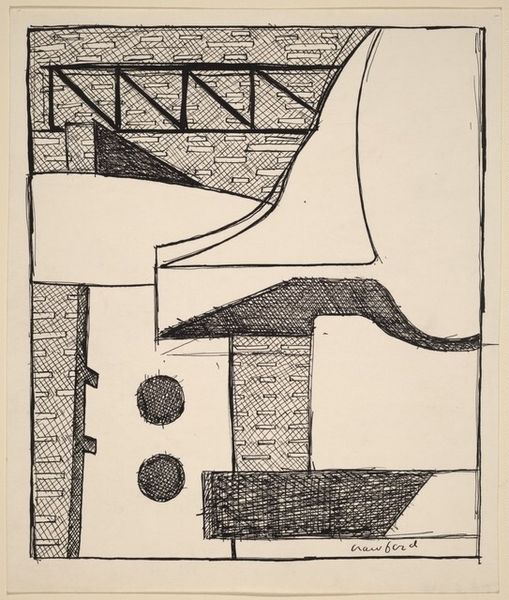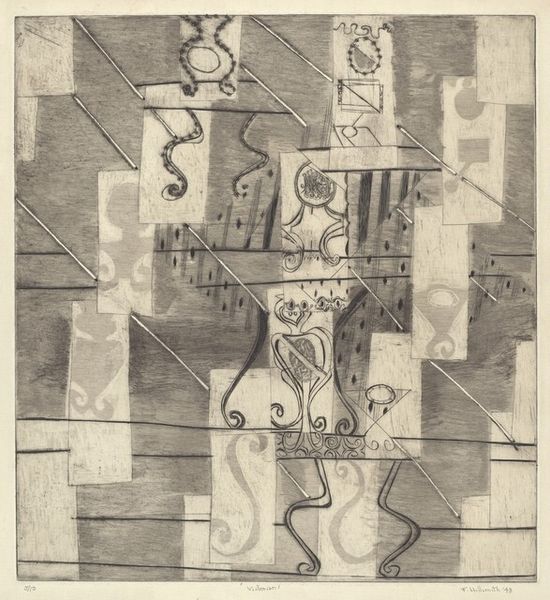
drawing, print, etching, engraving
#
portrait
#
drawing
#
cubism
# print
#
etching
#
figuration
#
engraving
Dimensions: plate: 27.7 x 22 cm (10 7/8 x 8 11/16 in.) sheet: 33.5 x 24.6 cm (13 3/16 x 9 11/16 in.)
Copyright: National Gallery of Art: CC0 1.0
Curator: Picasso’s “Man with a Dog,” dating somewhere between 1915 and 1947, rendered as an etching. What’s your initial take on this angular domestic scene? Editor: I’m immediately struck by the somber, almost spectral quality. It’s monochromatic, which adds to this sense, and the fractured lines give it a nervous energy. It’s as if the very foundations of home are…unstable. Curator: Unstable…that’s astute. Especially when we remember Picasso's constant exploration of form. The figure of the man, almost architecturally constructed, blends with the furniture around him. The dog feels fragile in comparison, barely tethered to the earth with these spindly legs. Do you see it that way? Editor: I do. And consider the role of dogs in art history—companions, symbols of fidelity. Here, the dog seems more of an afterthought, or perhaps even a victim, mirroring the man’s own fragmented existence within the confines of cubist representation. It prompts me to reflect on ideas of modern masculinity and its discontents, its fraught relationship to nature. Curator: The man is holding what appears to be a book, or perhaps stacked papers. Almost weaponized, like shielding himself from the world… or attacking it. But that rigid, blocky 'LE JOUR' suggests the daily news—his shield is the very thing telling him of impending doom, like something taken straight out of The Twilight Zone. Editor: Right. We have to recognize how "Man with a Dog" appears historically and socio-politically as produced through—and reflecting—Europe between World War I and World War II, in response to that period’s massive population displacement, economic inequalities, and overall widespread precarity. In other words, what does “home” even mean under such extreme duress? Curator: Yes, precariousness—a good way to understand the period—in this particular family. Perhaps “family” even. But circling back, beyond these wider questions about precarity and loss, can we return again to that intimate moment between man and beast… that very specific Picasso kind of “best”? The line work, after all, contains a curious sense of tenderness despite everything, however strange it all might seem. Editor: Agreed. The raw emotion transcends the fractured form, reminding us that even amidst the harshest conditions, bonds endure and reshape our understanding of both art and humanity. Curator: Nicely put. And that’s where I, as an artist myself, am grateful: in Picasso’s seemingly disordered mind, what he gave to the world, paradoxically, remains powerfully unforgettable.
Comments
No comments
Be the first to comment and join the conversation on the ultimate creative platform.
